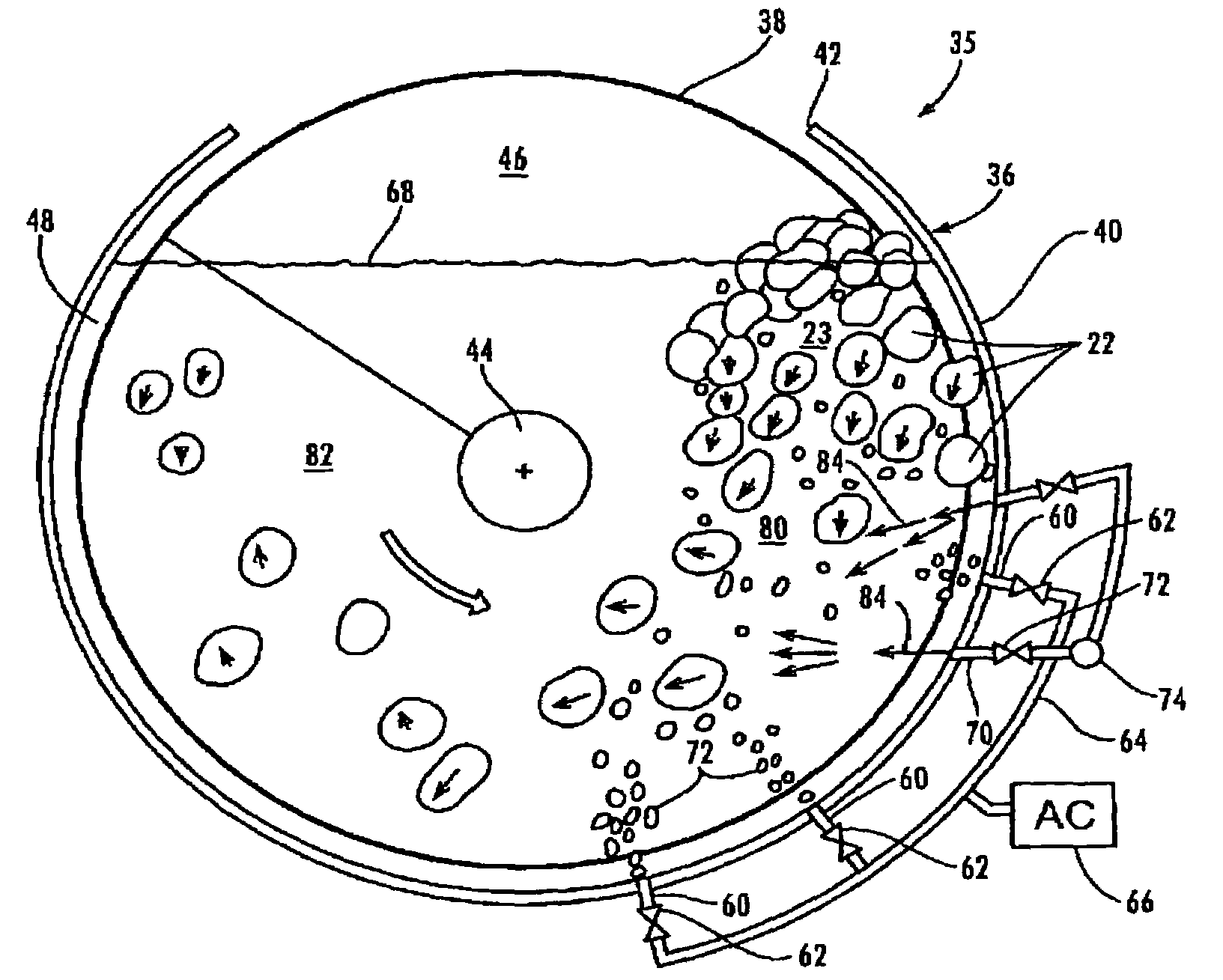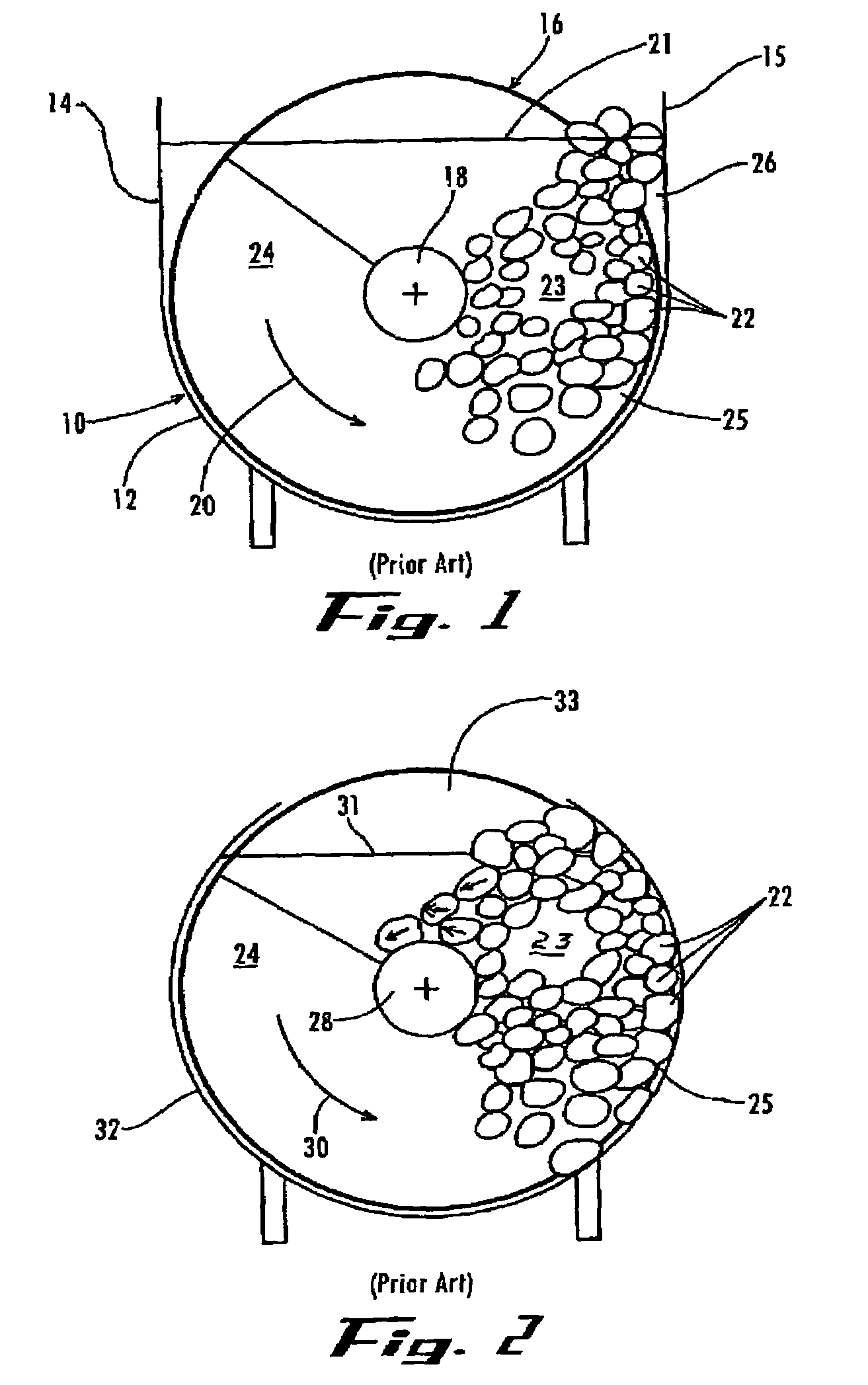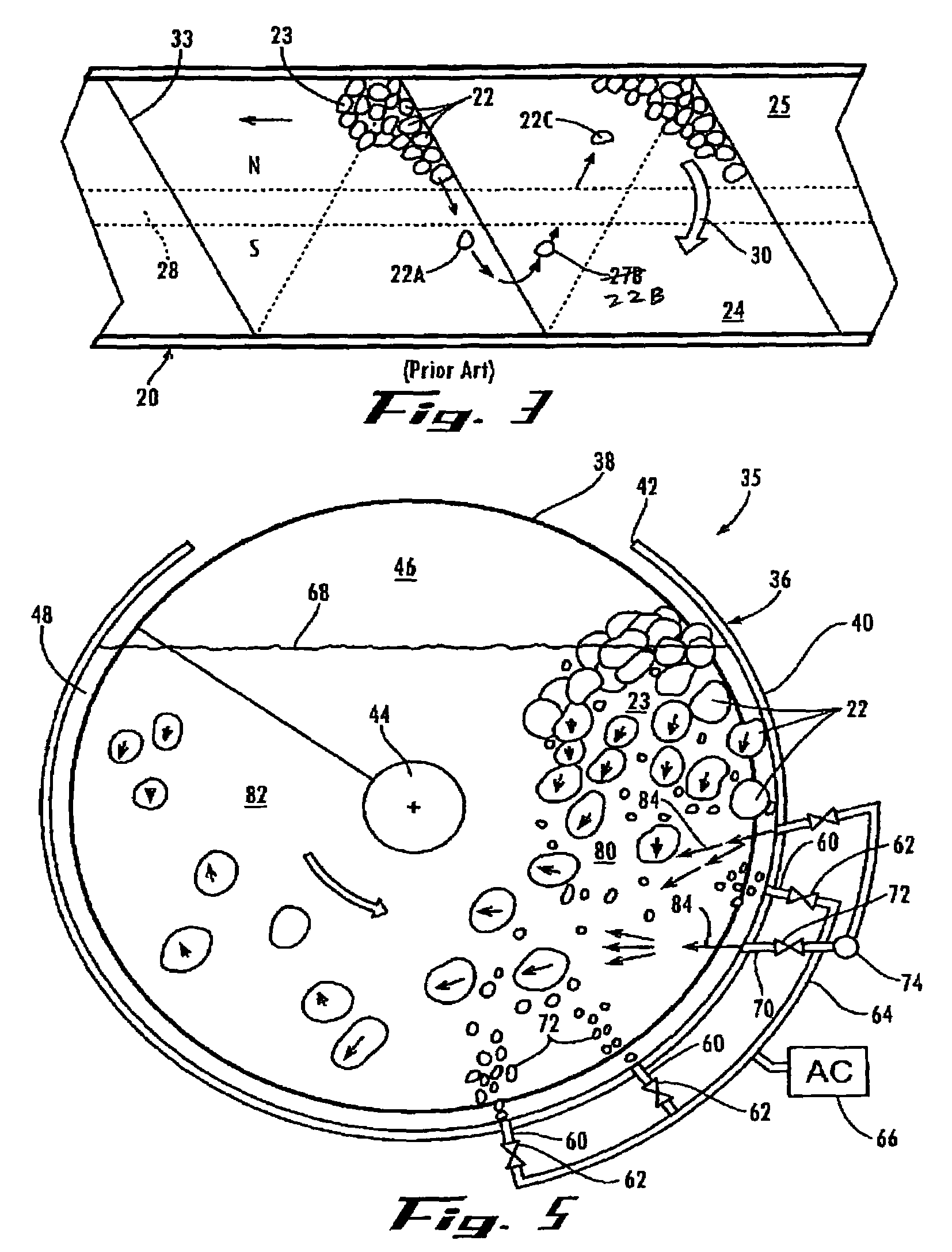Poultry chiller with improved product distribution and antibacterial count
a chiller and product technology, applied in the field of chillers, can solve the problems of birds falling behind, a longer time in the tank, and a risk of some birds, so as to reduce the bacterial count of birds, reduce the temperature of birds, and handle more birds
- Summary
- Abstract
- Description
- Claims
- Application Information
AI Technical Summary
Benefits of technology
Problems solved by technology
Method used
Image
Examples
example
[0069]The auger chiller of a configuration as disclosed in the drawing was used for conducting temperature and bacterial testing. The tank was 55 feet long and had a diameter of 8 feet, and held approximately 14,000 gallons of liquid that included water and chlorine. The auger in the tank had 15 turns of 360 degrees and was rotated at 0.5 RPM's. The time that the birds were submerged in the tank while being advanced by the auger from one end of the tank to the other end was 31 minutes.
[0070]Chlorine was added to the streams of water 84 flowing into the chiller at concentrations not exceeding 5 parts free chlorine to one million parts water. The temperature of the water was maintained at between 32.5 degrees F. and 33.5 degrees F. at the end of the tank where the water was recirculated into the tank, and between 34.5 degrees F. and 36 degrees F. at the end of the tank where the water was recirculated from the tank.
[0071]The birds being chilled in the tank were whole chickens ranging ...
PUM
 Login to View More
Login to View More Abstract
Description
Claims
Application Information
 Login to View More
Login to View More - R&D
- Intellectual Property
- Life Sciences
- Materials
- Tech Scout
- Unparalleled Data Quality
- Higher Quality Content
- 60% Fewer Hallucinations
Browse by: Latest US Patents, China's latest patents, Technical Efficacy Thesaurus, Application Domain, Technology Topic, Popular Technical Reports.
© 2025 PatSnap. All rights reserved.Legal|Privacy policy|Modern Slavery Act Transparency Statement|Sitemap|About US| Contact US: help@patsnap.com



